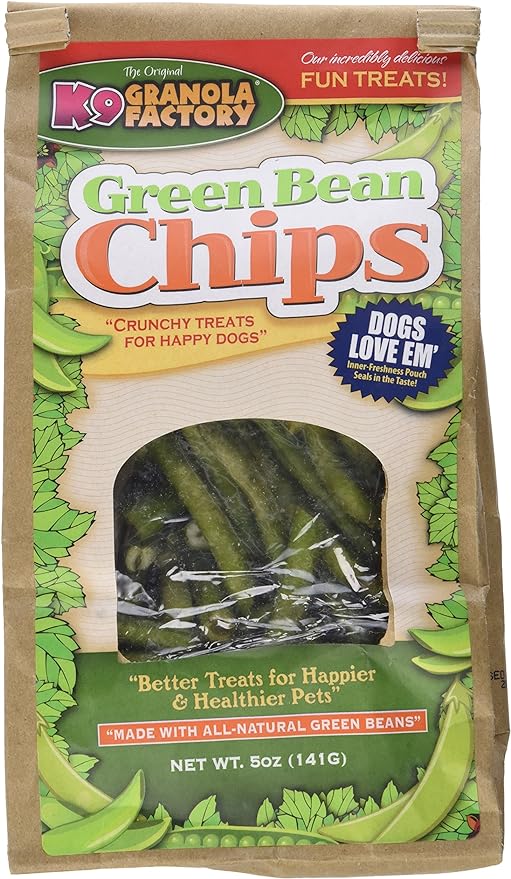As a loving dog owner, you want to provide your furry friends with the best nutrition to keep them happy and healthy. While commercial dog foods are formulated to meet your pup’s dietary needs, adding some fresh, dog friendly vegetables can supercharge their snack time with a nutritional boost. This comprehensive guide will explore the top safe vegetables for dogs to eat, packed with essential vitamins, minerals, and fiber to support their overall well-being. Get ready to discover a world of tasty, veggie-based treats that your canine companion will love!
Why Should You Feed Dog Friendly Vegetables?
Feeding your dog a balanced diet is crucial for their health and well-being. While commercial dog foods are formulated to provide complete nutrition, adding fresh vegetables to your pup’s diet can offer numerous benefits. Vegetables are an excellent source of essential vitamins, minerals, and dietary fiber, which can support various aspects of your dog’s health.
Firstly, many vegetables are rich in antioxidants, which can help protect your dog’s cells from damage caused by free radicals. This can contribute to a more muscular immune system and potentially reduce the risk of certain diseases. Additionally, the fiber found in vegetables can aid in maintaining a healthy digestive system and promote regular bowel movements.
Moreover, certain vegetables are particularly beneficial for specific health concerns. For example, vegetables high in vitamin A, such as carrots and sweet potatoes, can support healthy skin and coat. At the same time, leafy greens like spinach and kale are excellent sources of vitamins C and K, which are important for bone health and blood clotting.
Read more on what to give your dog for best nutrition
What are the top 10 vegetables for dogs?
While many dog-friendly vegetables exist, some stand out for their exceptional nutritional value and versatility. Here are the top 10 best vegetables for dogs:
- Carrots
- Green beans
- Broccoli
- Sweet potatoes
- Spinach
- Zucchini
- Brussels sprouts
- Cucumbers
- Bell peppers
- Pumpkin
Can Dogs Eat Carrots and Other Root Vegetables?
Carrots are a human favorite and a safe and nutritious option for dogs. These crunchy, orange veggies are packed with beta-carotene, converted to vitamin A in the body, and support healthy vision, skin, and immune function. Other root vegetables like sweet potatoes, pumpkin, and turnips are excellent choices for your pup.
When introducing carrots or other root vegetables to your dog’s diet, it’s best to start with small portions and monitor for any signs of digestive discomfort. Additionally, it’s recommended to cook or puree these vegetables to make them easier for your dog to digest, especially for older dogs or those with dental issues.
Green Beans: A Crunchy, Low-Calorie Treat for Dogs
Green beans are a fantastic, low-calorie treat option for dogs, making them an excellent choice for overweight or obese pups. These crunchy veggies are low in calories and a good source of vitamins C and K and fiber, aiding digestion.
Green beans can be served raw, cooked, or frozen as a refreshing summer treat. However, avoiding adding seasoning or butter is essential, as these can harm your dog’s health.
Is Broccoli Safe for Dogs to Eat?
Broccoli is another nutrient-dense vegetable that can be safely incorporated into your dog’s diet in moderation. This cruciferous veggie is an excellent source of vitamins C and K, fiber, and antioxidants, and it is included in the list of vegetables dogs can eat every day.
While broccoli is generally safe for dogs, it’s important to note that some dogs may experience gas or bloating after consuming it, especially if introduced too quickly or in large quantities. Additionally, broccoli stalks can be a choking hazard, so it’s best to cook or chop them into smaller pieces before feeding them to your pup.
Sweet Potatoes: A Nutritious and Delicious Option for Dogs
Sweet potatoes are a beloved vegetable among dogs and their owners alike. These versatile tubers are rich in vitamins A and C, fiber, and antioxidants. They can be served cooked, mashed, or dehydrated as a crunchy treat.
In addition to their nutritional benefits, sweet potatoes are also a great source of dietary fiber, which can help support a healthy digestive system and promote regular bowel movements in dogs.
Preparing Vegetables for Your Dog: Tips and Tricks
While many vegetables are safe for dogs to eat raw, some preparation may be necessary to make them more digestible and palatable for your furry friend. Here are some tips for preparing vegetables for dogs, ensuring they receive the optimal health benefits.
- Cooking: Steaming or boiling vegetables can make them easier to digest, especially for older dogs or those with dental issues.
- Pureeing: Blending or pureeing vegetables can make them more easily consumable and can be mixed into your dog’s regular food.
- Chopping: Chopping crunchy vegetables like carrots or green beans into bite-sized pieces can prevent choking hazards.
- Removing seeds and stems: Some seeds and stems can harm dogs, so it’s crucial to remove them from vegetables like bell peppers or tomatoes before serving.
Vegetables to Avoid Feeding Your Dog
While many vegetables are safe and nutritious for dogs, a few should be avoided. Here are some vegetables that you should never feed your dog:
- Onions and garlic: These vegetables from the allium family can cause gastrointestinal irritation and potentially lead to red blood cell damage in dogs.
- Rhubarb: The leaves of the rhubarb plant contain oxalates, which can cause kidney stones and other health issues in dogs.
- Mushrooms: While some mushroom varieties are safe for dogs, others can be toxic and potentially fatal, illustrating the importance of knowing what vegetables dogs can eat.
- Raw potatoes: Raw potatoes contain a compound called solanine, which can be toxic to dogs in large quantities.
Introducing Vegetables to Your Dog’s Diet: What to Keep in Mind
When introducing new vegetables to your dog’s diet, it’s crucial to take a gradual approach to avoid digestive upset. Start with small portions and monitor your dog’s reaction before increasing. Washing and preparing the vegetables properly is essential to remove any dirt, pesticides, or harmful residues.
If your dog has any underlying health conditions or is on medication, it’s always best to consult your veterinarian before significantly changing their diet.
Creative Ways to Incorporate More Veggies into Your Dog’s Meals
Adding vegetables to your dog’s meals can be as simple as mixing them into their regular food or offering them as a healthy treat. However, if you’re looking for more creative ways to incorporate veggies into your pup’s diet, here are a few ideas:
- Veggie-based dog treats: Dehydrate or bake vegetable slices or purees into crunchy or chewy treats.
- Vegetable-infused dog food: Puree or finely chop vegetables and mix them into your dog’s regular food.
- Veggie smoothies: Blend dog-friendly fruits and vegetables with water or unsweetened yogurt for a refreshing smoothie.
- Stuffed Kongs or puzzle toys: Stuff or freeze vegetables inside interactive toys to keep your dog entertained and rewarded with a healthy snack.
Signs Your Dog May Be Intolerant to Certain Vegetables
While most dogs can safely consume various vegetables, some may develop intolerances or allergies to certain types. If you notice any of the following signs after introducing a new vegetable to your dog’s diet, it’s best to discontinue feeding that particular veggie and consult with your veterinarian:
- Vomiting or diarrhea
- Excessive gas or bloating
- Skin irritations or itching
- Loss of appetite
- Lethargy or discomfort
Remember, every dog is unique, and what may be a nutrient-packed treat for one pup could cause discomfort for another. Please pay close attention to your dog’s reactions and adjust their diet accordingly.
Here’s a bulleted summary of the most important things to remember when feeding vegetables to your dog:
- Vegetables provide essential vitamins, minerals, fiber, and antioxidants that support overall canine health.
- Good dog veggie options include carrots, green beans, broccoli, sweet potatoes, spinach, pumpkin, zucchini, Brussels sprouts, cucumbers, and bell peppers.
- Some vegetables like onions, garlic, rhubarb, and mushrooms should be avoided as they can be toxic to dogs.
- When introducing new veggies, start with small portions and watch for digestive issues like vomiting or diarrhea.
- Prep veggies by cooking, pureeing, or chopping to aid digestion, especially for senior dogs or those with dental problems.
- Be creative by making veggie-based treats, mixing purees into food, making smoothies, or stuffing Kongs.
- Discontinue any vegetable that causes your dog intolerances, such as excessive gas, skin irritation, or lethargy.
- Moderation is vital – veggies should complement a balanced, complete dog food diet, not replace it.
- Always consult your vet before making significant dietary changes, especially for dogs with health conditions.
Incorporating dog-friendly vegetables provides an easy way to boost your pup’s nutrition for improved overall health and vitality. With some preparation and monitoring, you can safely supercharge snack time!
FAQs on Dog Friendly Vegetables
Can dogs eat corn?
Yes, dogs can eat corn in moderation. However, it’s important to note that corn is a common allergen for some dogs, and it should be introduced slowly to monitor for any adverse reactions.
What are some dog-friendly vegetables and fruits?
In addition to the abovementioned vegetables, dogs can eat fruits like apples, bananas, blueberries, and strawberries. Always introduce new fruits and veggies gradually and in moderation.
What vegetables can dogs not eat?
Dogs should avoid certain vegetables that can be toxic or harmful to them. These include onions, garlic, rhubarb leaves, and mushrooms. Raw potatoes, Avocado pit and skin, Tomato leaves and stems, and unripe or green tomatoes should also be avoided as they contain solanine, which can be toxic to dogs in large quantities.
How do I prepare vegetables for my dog?
When preparing vegetables for your dog, you can serve them raw, cooked, or pureed. Steaming or boiling vegetables can make them easier to digest, especially for older dogs or those with dental issues. Pureeing the vegetables can make them more easily consumable and can be mixed into your dog’s regular food.
Wondering what vegetables can dogs eat everyday?
Many dog-friendly vegetables, such as carrots, green beans, and sweet potatoes, can be incorporated into your dog’s diet daily in moderation. However, it’s best to consult your veterinarian for portion sizes based on your dog’s needs and activity level.
Can vegetables provide important vitamins and minerals for dogs?
Yes, vegetables can provide essential vitamins and minerals for dogs. For example, carrots and sweet potatoes are rich in vitamin A, which supports healthy skin and coat. Leafy greens like spinach and kale are excellent sources of vitamins C and K, important for bone health and blood clotting.
Are raw vegetables safe for dogs?
While some raw vegetables are fine for dogs, others may be better served cooked or pureed for easier digestion. Raw vegetables can also pose a choking hazard, especially for smaller dogs. The American Kennel Club recommends monitoring your dog when giving them raw vegetables and offering appropriately sized pieces.
Can certain vegetables cause gastric irritation in some dogs?
Some dogs may experience gastric irritation or digestive issues when consuming certain vegetables, particularly cruciferous veggies like broccoli and cauliflower. To monitor your dog’s reaction, introduce new vegetables gradually and in small portions.
How can I help my dog maintain a healthy weight with vegetables?
Vegetables are a great addition to dogs’ diets that need to lose weight or maintain a healthy weight. Many vegetables are low in calories and high in fiber, which can help dogs feel full without excessive caloric intake. Offering vegetables as treats or adding them to your dog’s regular meals can be an effective strategy.











